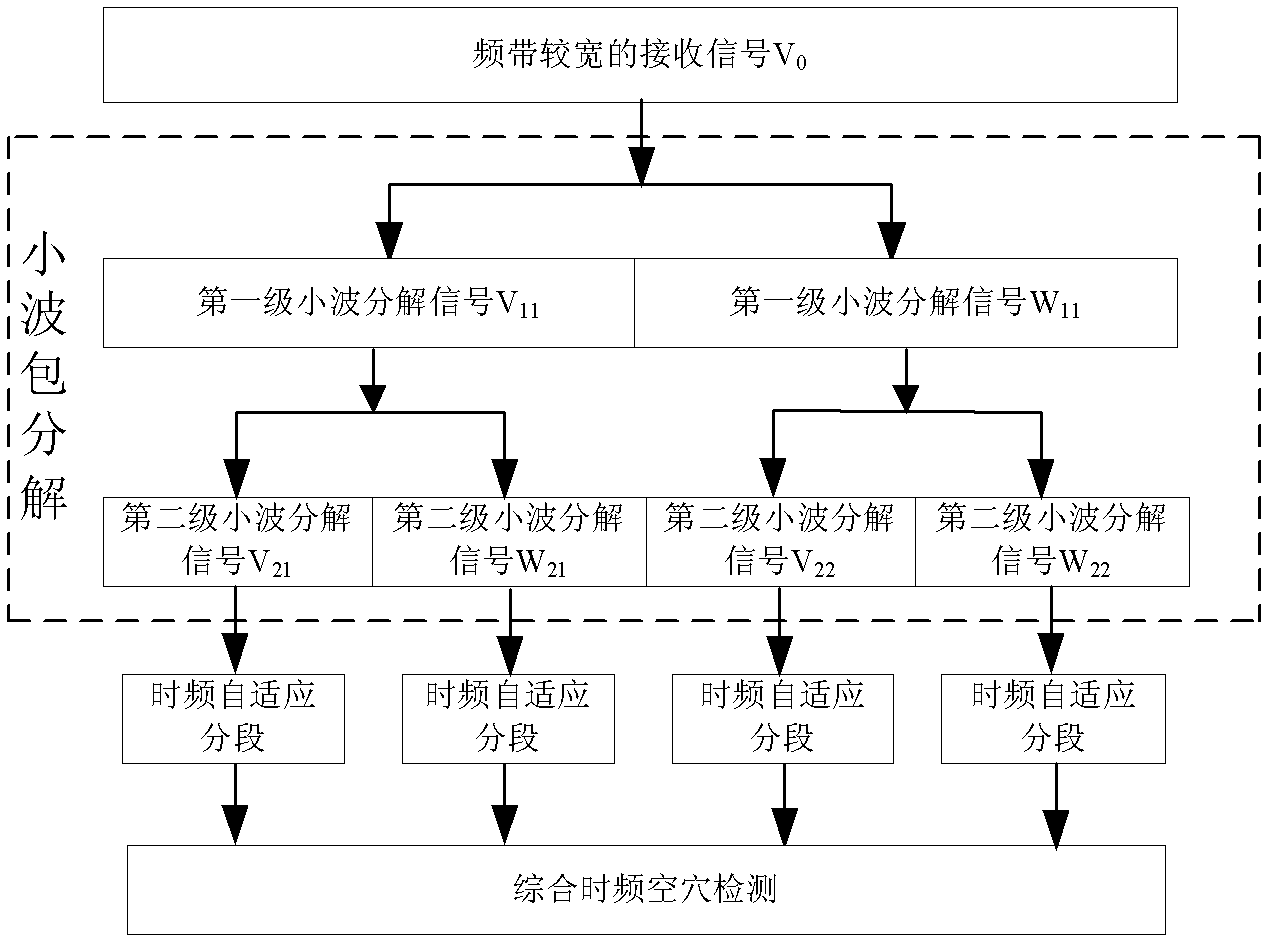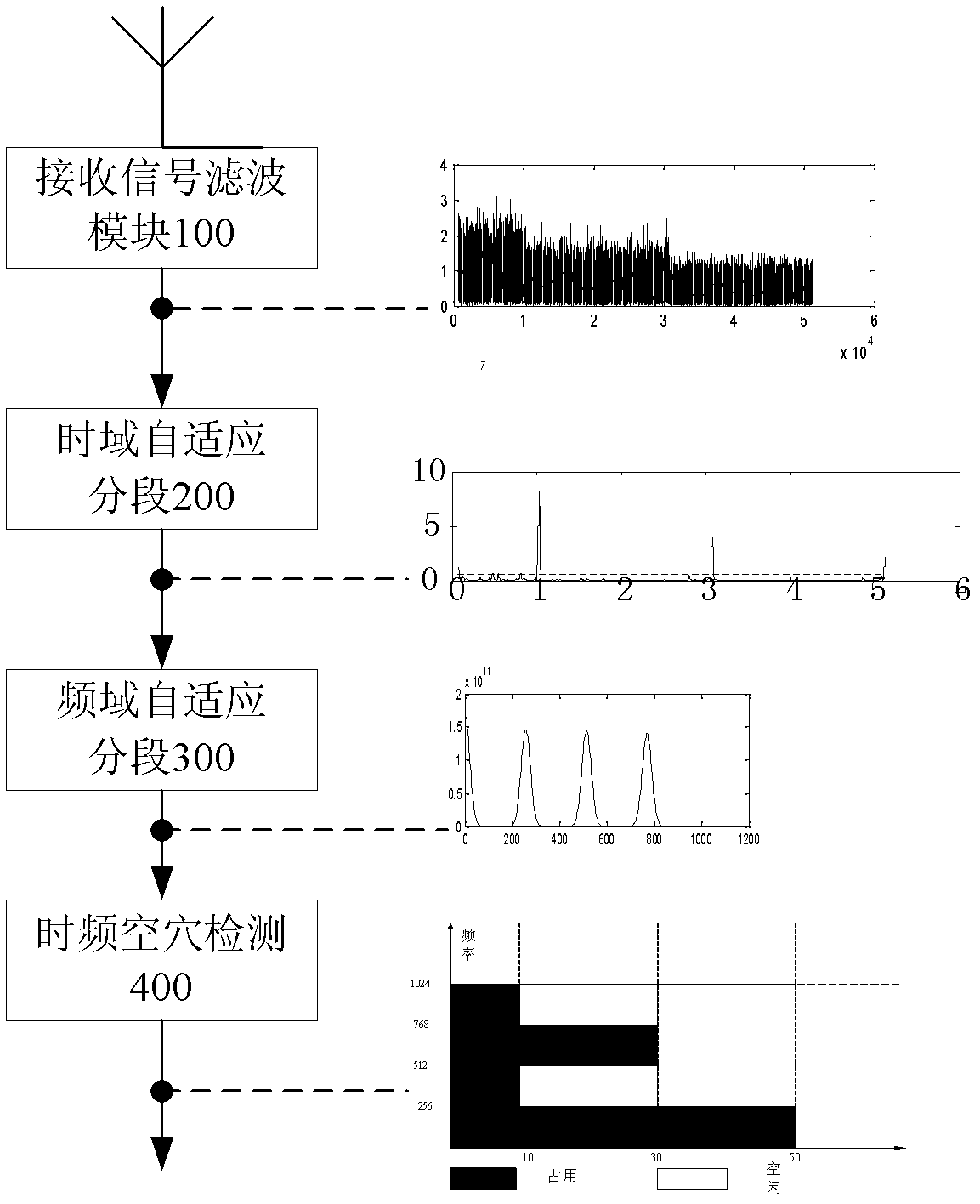Self-adaptive time-frequency hole detection method based on wavelet transformation
A wavelet transform and detection method technology, applied in transmission monitoring, electrical components, transmission systems, etc., can solve the problems of limited signal correlation, long time interval, high computational complexity, etc., and achieve the effect of reducing the loss of access opportunities
- Summary
- Abstract
- Description
- Claims
- Application Information
AI Technical Summary
Problems solved by technology
Method used
Image
Examples
Embodiment Construction
[0080] The present invention is described in further detail below in conjunction with accompanying drawing:
[0081] The realization of time-frequency cavitation adaptive detection method based on wavelet transform can be divided into the following four steps,
[0082] as shown in picture 2:
[0083] The first step: signal filtering and sampling;
[0084] (1) Continuous sampling of the time domain signal;
[0085] (2) According to the cognitive user sampling bandwidth (intercepting frequency bandwidth), decide whether to use wavelet packet decomposition for the time-domain sampling signal.
[0086] Step 2: Time-domain Adaptive Segmentation of the Filtered Signal
[0087] (1) Sampling the time-domain signal (or the time-domain signal through wavelet packet decomposition) according to formula (2) to find the moving average power of the signal;
[0088] (2) Adopting the first-order derivative of a certain smooth function as a wavelet function, carrying out multi-scale wavelet...
PUM
 Login to View More
Login to View More Abstract
Description
Claims
Application Information
 Login to View More
Login to View More - R&D
- Intellectual Property
- Life Sciences
- Materials
- Tech Scout
- Unparalleled Data Quality
- Higher Quality Content
- 60% Fewer Hallucinations
Browse by: Latest US Patents, China's latest patents, Technical Efficacy Thesaurus, Application Domain, Technology Topic, Popular Technical Reports.
© 2025 PatSnap. All rights reserved.Legal|Privacy policy|Modern Slavery Act Transparency Statement|Sitemap|About US| Contact US: help@patsnap.com



